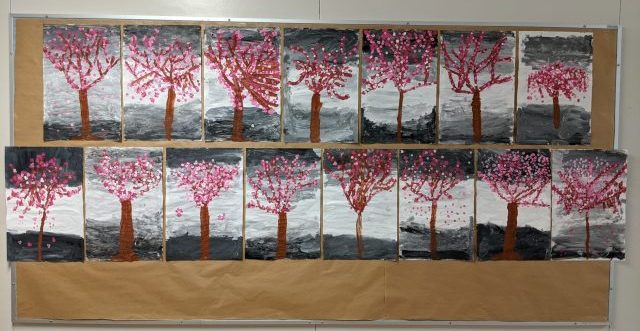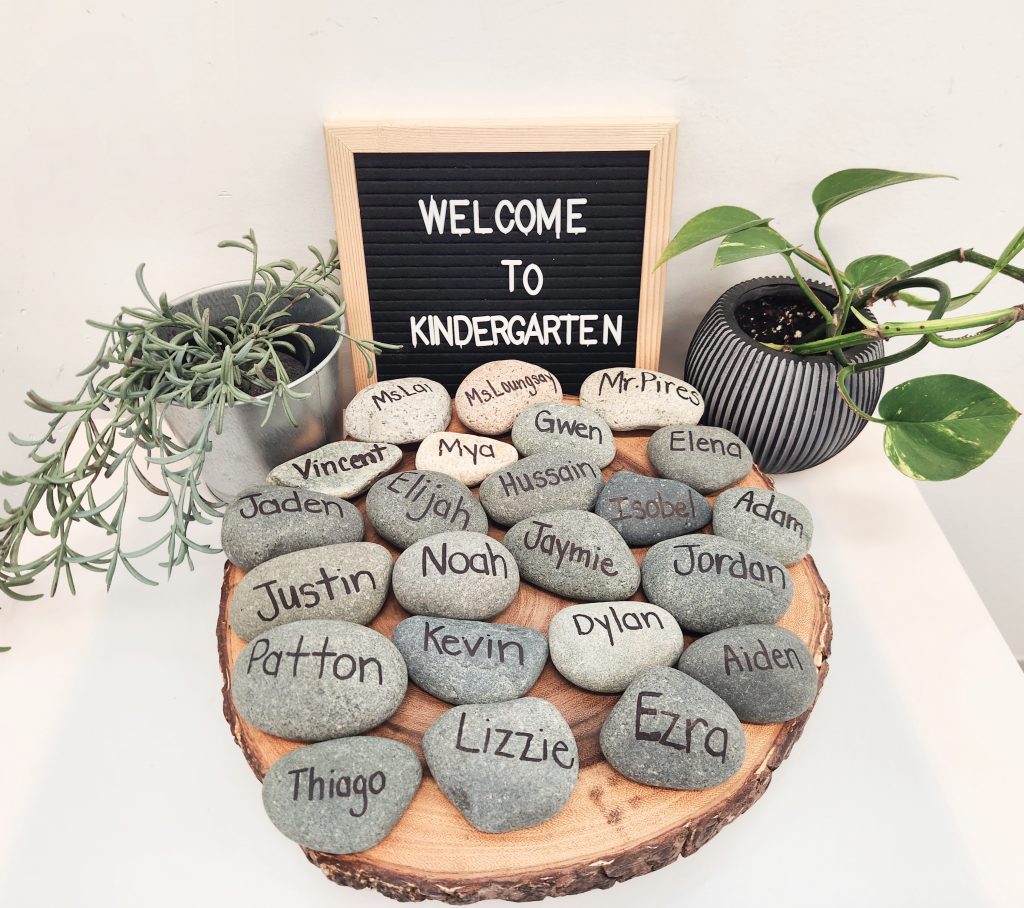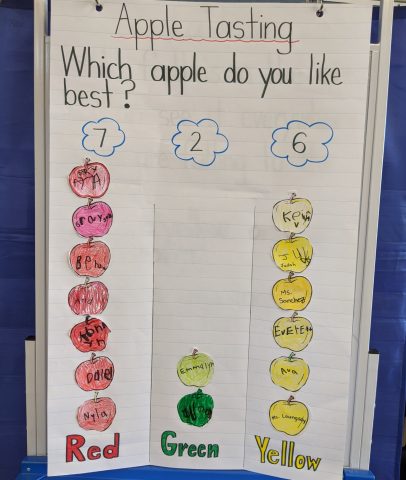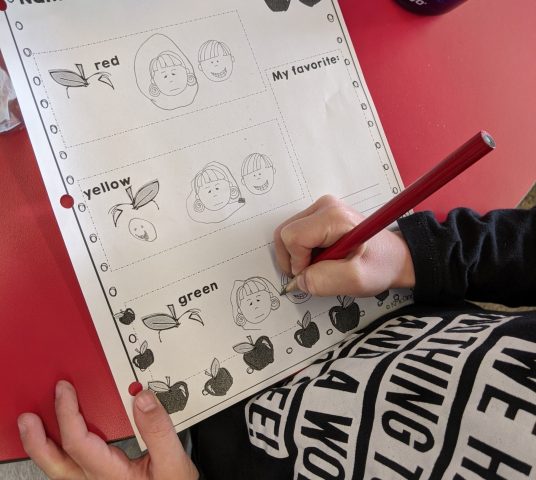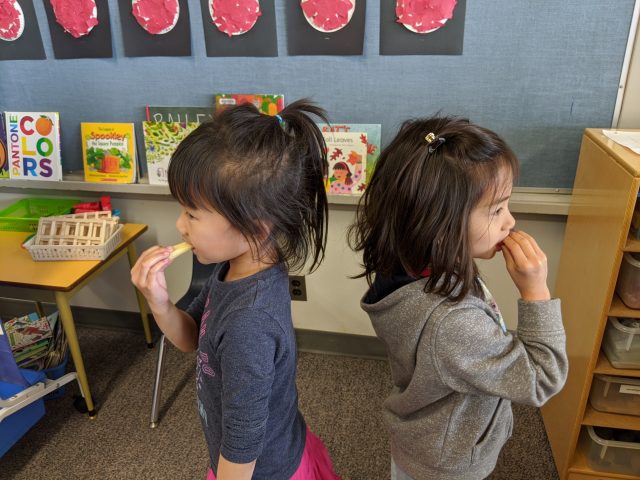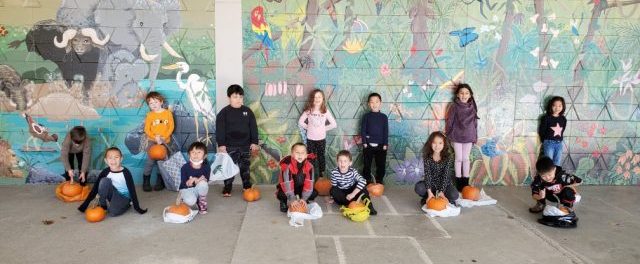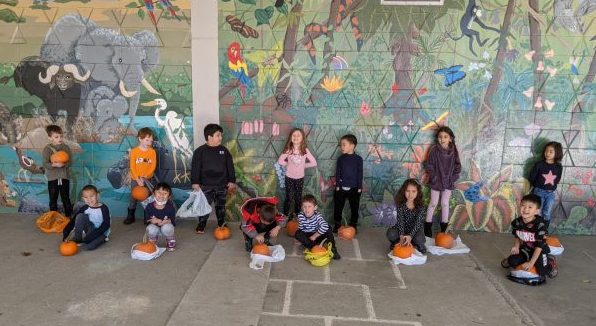On our first nature walk, we explored signs of fall. We read a story called “Wonderfall”. The story follows a single tree through the changing seasons. While we were reading the story, we noticed the tree drops acorns, loses leaves and provides food and a home for a pair of squirrels. Before heading out to explore fall, we brainstormed what we might find using one of our senses, sight. We predicted that we might see leaves changing colours, leaves falling, acorns, apples, caterpillars, squirrels, people wearing jackets and scarves, wind, the sun, and clouds. During our nature walk, the first thing we discovered were falling leaves. We also found a caterpillar on an abandoned frisbee! We didn’t see any squirrels gathering acorns, but we did find some apples under an apple tree.
On our second nature walk, we gathered leaves and decided to sort them by colours to make it easier to see what we had found. We identified the colours we needed and placed coloured construction paper mats in brown, red, green, orange and yellow on the floor. Then we sorted! Stay tuned for our next post. We will be creating our own fall colour!
We also made patterns on our nature walk too!
